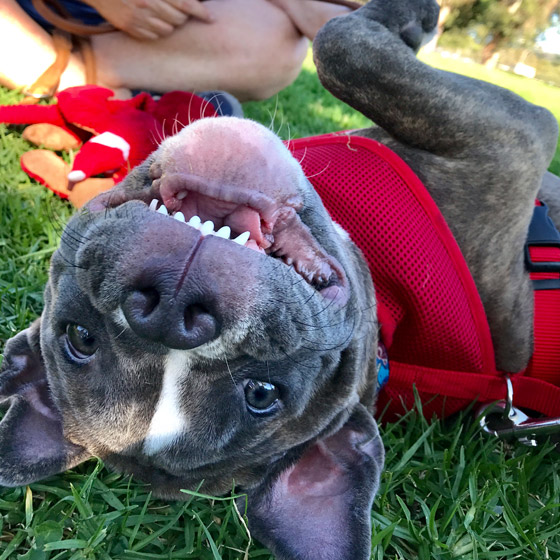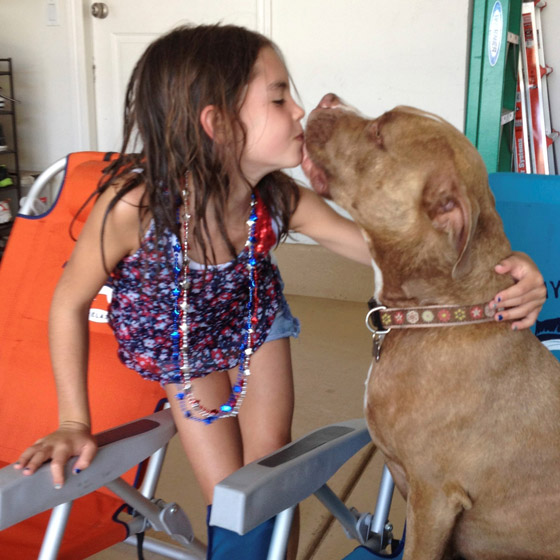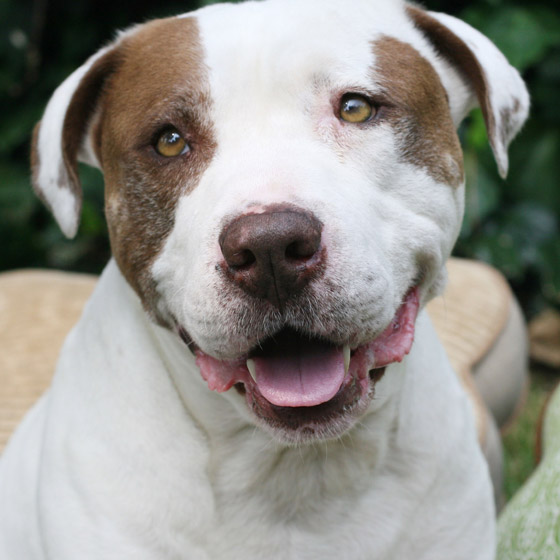Pit Bulls are wonderful animals that deserve a chance to have a good life like
any other dog. However, it’s important to remember that Pit Bulls are not just
any other dog. They are a little more of everything a dog can be.
Pit Bulls have great physical and mental characteristics that make them
excellent partners for responsible, active, and caring owners. On the other
hand, these same outstanding qualities can make them a little difficult to
handle for people who don’t have a lot of experience with dog ownership or for
those who don’t understand the breed very well. Luckily, Pit Bulls are very
responsive to training and eager to please. It is therefore strongly
recommended to take them to obedience classes as soon as they are up to date
with their shots. (Pit Bulls are prone to distemper and parvo, so it is
important that they receive all their vaccinations before coming into contact
with other dogs or going places that other dogs frequent). A well-behaved and
obedient Pit Bull will be a great ambassador for the breed and help fight
prejudice and misconceptions.
Pit Bulls are very adaptable and will even do well in urban living, provided
they have enough exercise or other positive outlets for their energy. Many Pit
Bulls are easy going couch potatoes, but can also be quite rambunctious until
they mature. Maturity can come pretty late with this breed (2 to 3 years old
in some cases). Pit Bulls remain playful al their life and have a great sense
of humor. These dogs will make you laugh like no other.
Pit Bulls are strong, energetic, agile and powerful dogs. They are also very
resourceful and driven. “Determination” is one of their most notable traits.
Whatever they set out to do, they will put their heart and soul into it.
Whether it’s escaping out of an inadequately fenced yard to explore the
neighborhood or destroying your new couch when left home alone or climbing
into your lap to shower you with kisses – they just don’t give up easily.
Stahlkuppe (1995) writes: “The American Pit Bull Terrier (APBT) or the Am
Staff, is certainly not the right pet for everyone. Being a powerful dog, it
will require sufficient and adequate control. Some prospective elderly owners
or children will not be able to supply that control. A first time dog owner,
in the minds of many experienced dog breeders, should not buy an APBT or an Am
Staff. An insecure person who wants only an aggressive dog to bolster some
personal human inadequacy should never become an owner of one of these dogs.”
Another very important characteristic of Pit Bull dogs is their amazing love
of people. These dogs are indeed remarkably affectionate, and crave human
attention. They are wonderful cuddlers and nothing beats a belly rub. In fact,
most Pit Bulls think they are lap dogs!
Dunbar (1999) writes: “Today, a properly bred Pit Bull is so exuberantly happy
upon meeting her owner’s friends (or even friendly strangers) that new owners
sometimes worry that their dog is too sweet and fun-loving to protect their
home and family. A multitalented companion, the well-trained Pit Bull is
suited for a variety of exciting activities. He excels at obedience, agility
and weight pulling competitions, events, which showcase intelligence, training
ability and strength. In addition, the Pit Bull’s pleasant nature makes him an
ideal candidate for therapy work with people.”
Human aggression, severe shyness and instability are not traits typically
found and accepted in the Pit Bull breed. Dogs with these traits are not good
representatives of the breed and should not be placed in adoptive homes.
Like any other breed, Pit Bulls can develop behavior problems if mishandled,
abused, poorly bred; unsocialized, etc. that could result in inappropriate
aggression. Any large, strong and powerful dog that attacks can do a lot of
damage. This is why serious temperament evaluation is so important when
dealing with dogs of certain size. Unlike the myth propagated by the media,
human aggression is not a problem specific to the Pit Bull breed. In fact, Pit
Bulls tend to do better than average in temperament tests.
The American Temperament Test Society provides testing around the country for
dog breeds and provides a passing score for the entire breed, based on the
percentage of passed over failed within total number of that particular breed
tested. As of March 2001, the American Pit Bull Terrier has a current passing
rate of 82.3% which makes him one of the top 5 most stable breed of dog in the
country.
Pit Bulls make wonderful, loving and very loyal companions. It is important
however, to understand the breed’s nature, to provide a structured environment
and to establish a positive leadership role. In order to do so, Pit Bull
owners must understand the original purpose of the breed and respect its
limits and potential.



